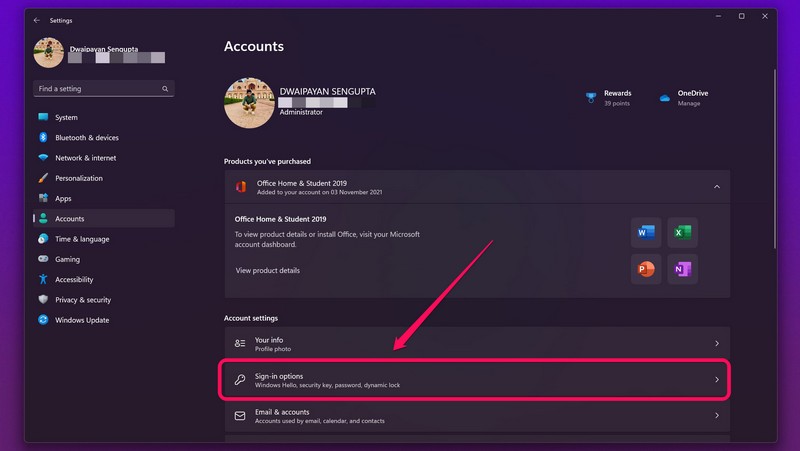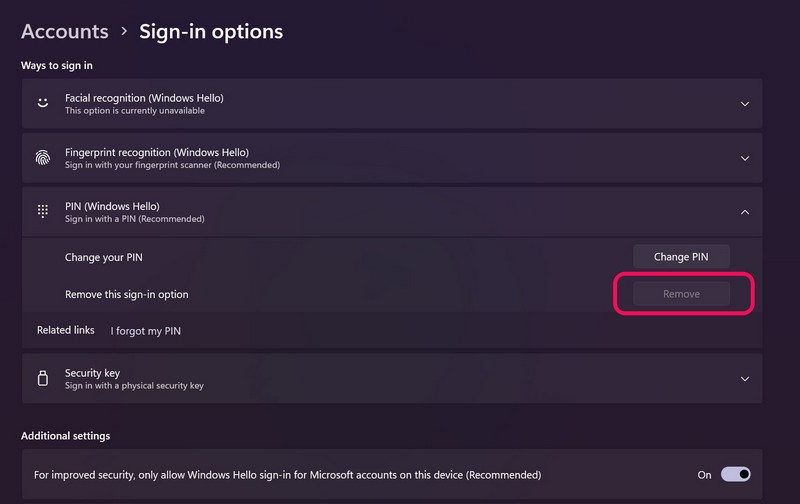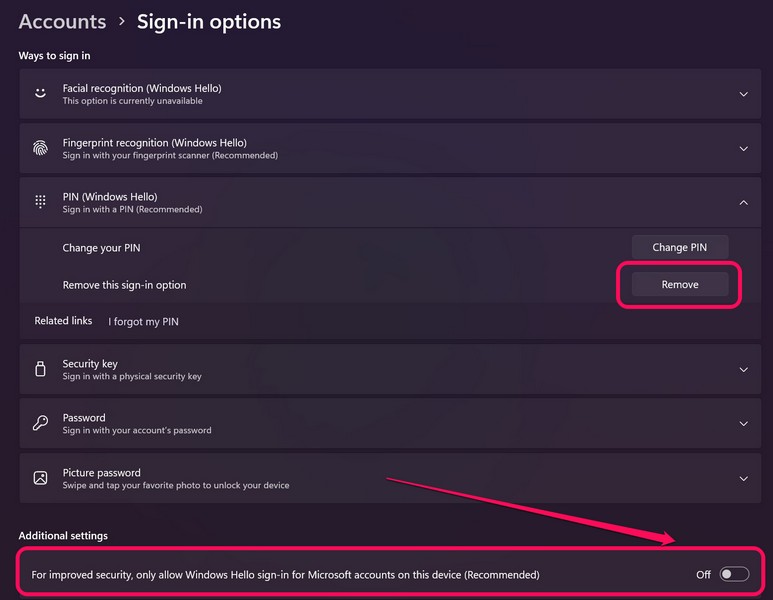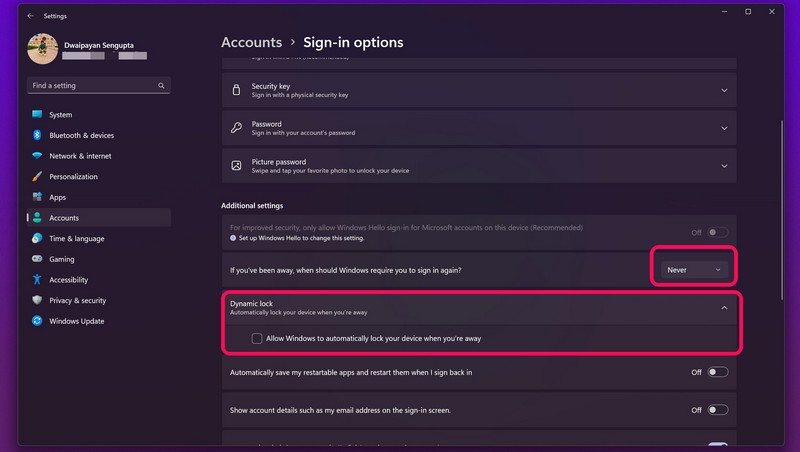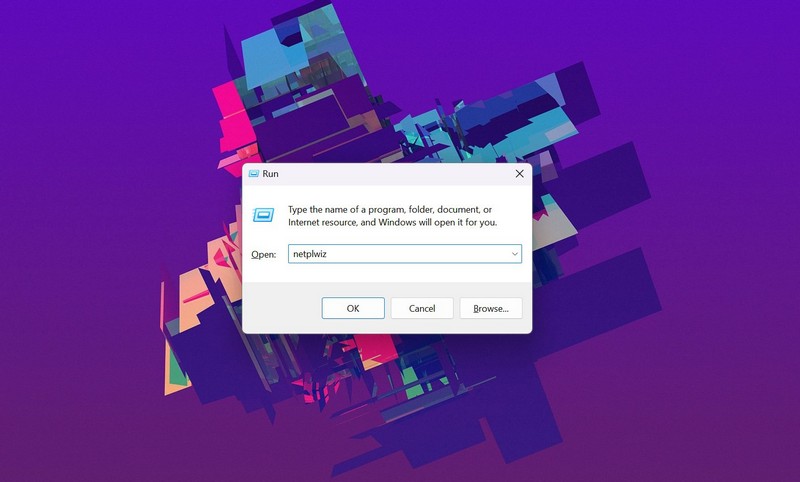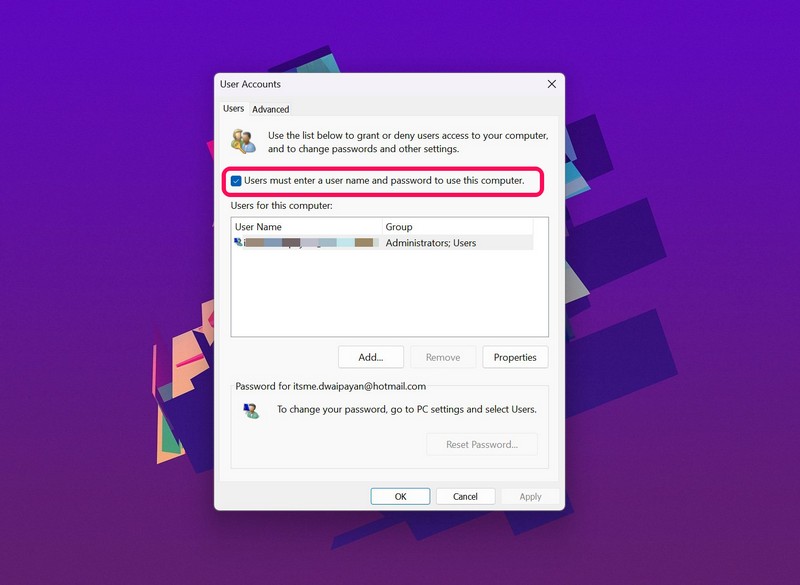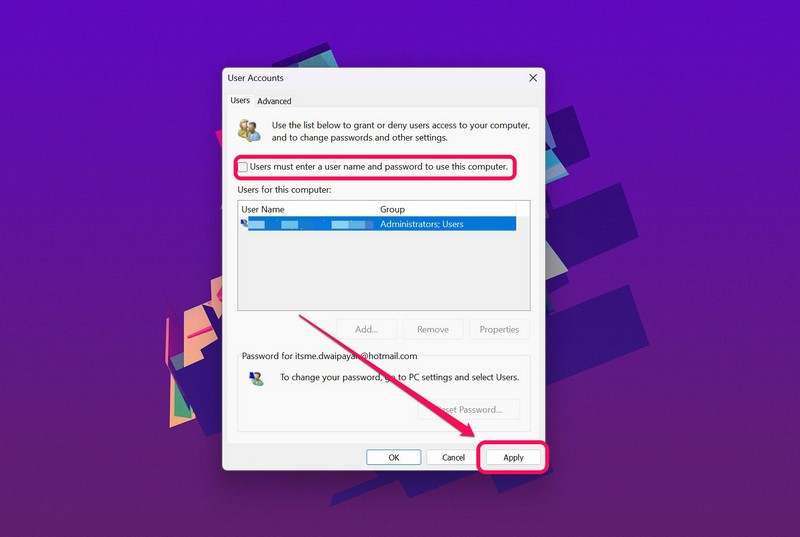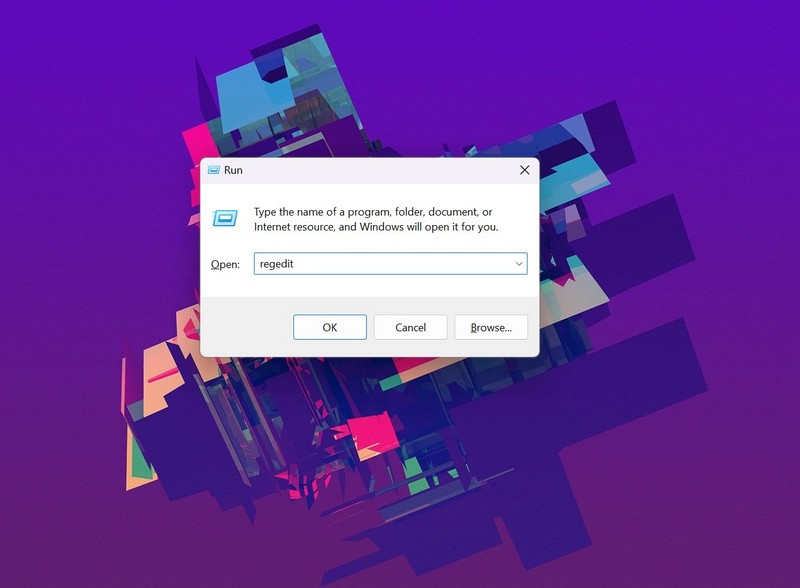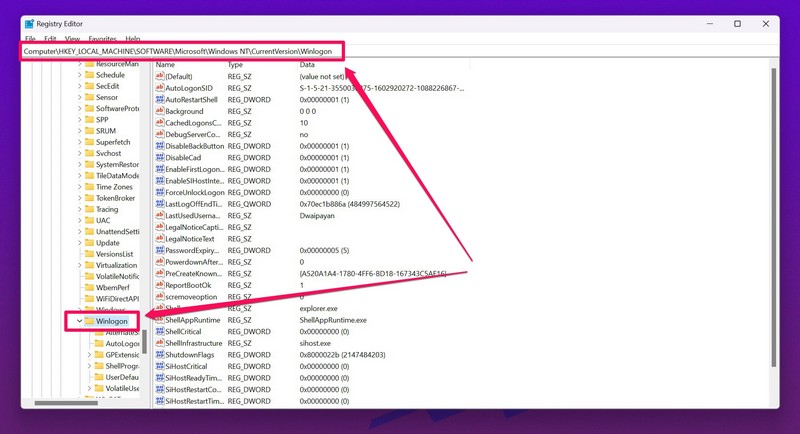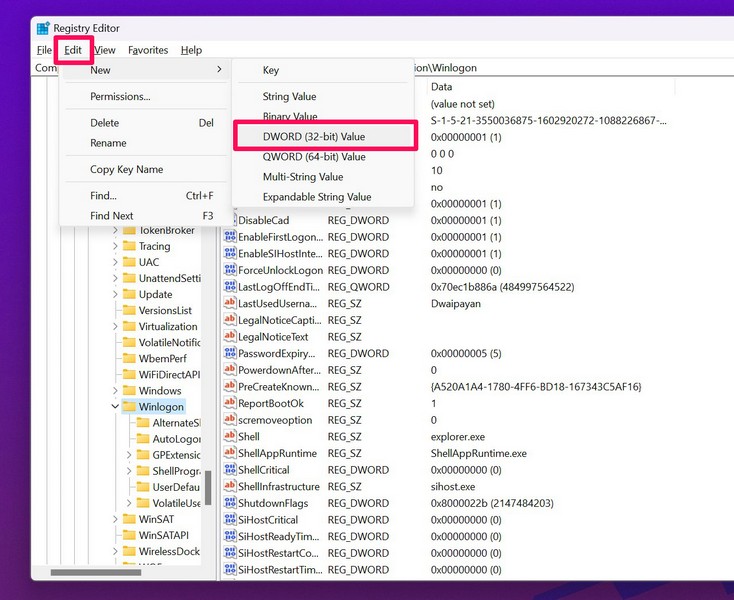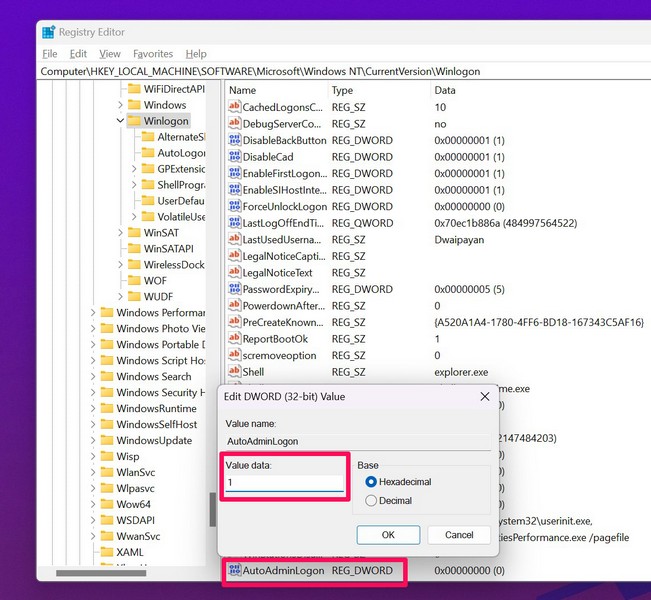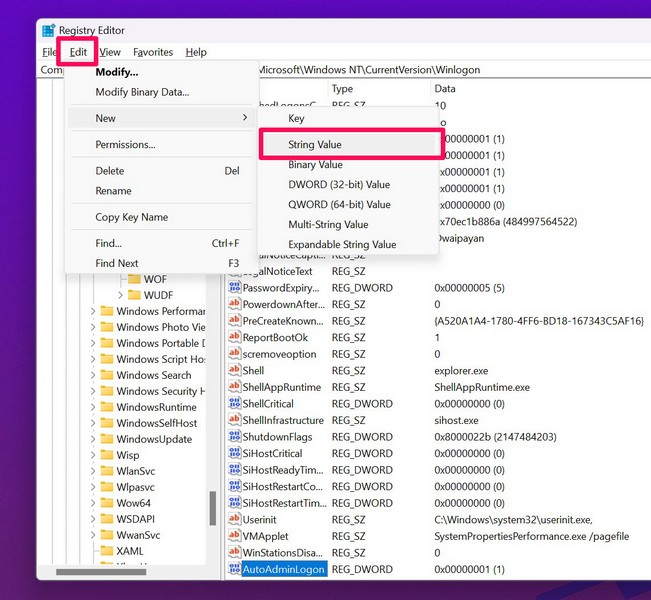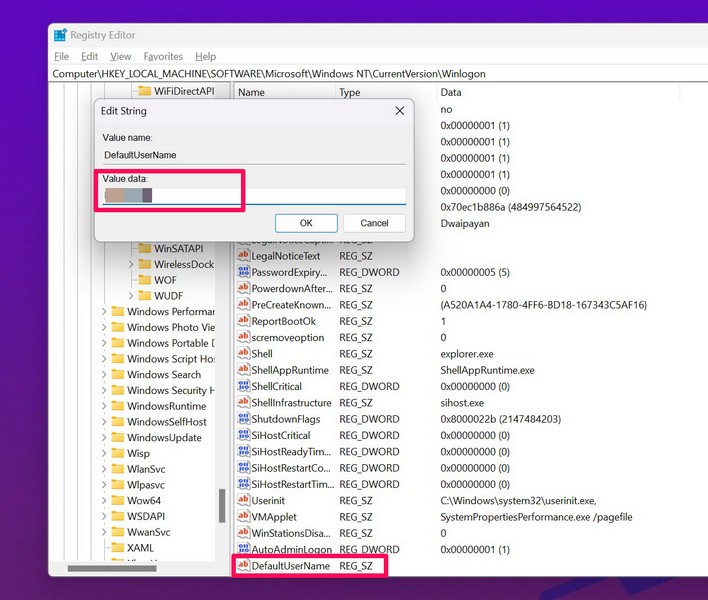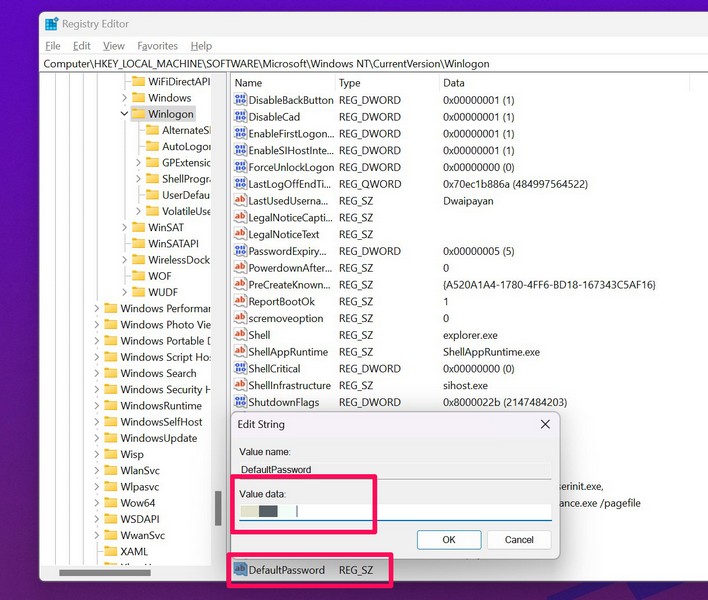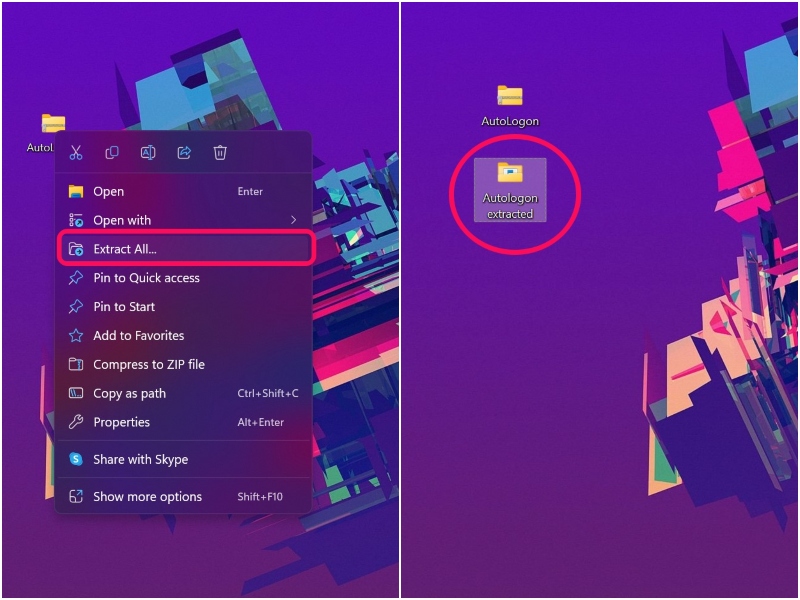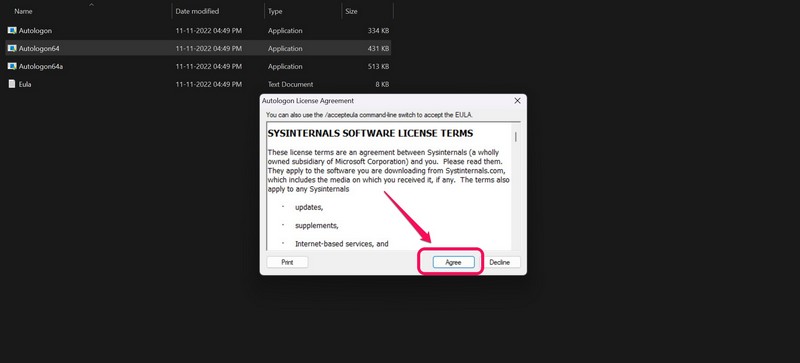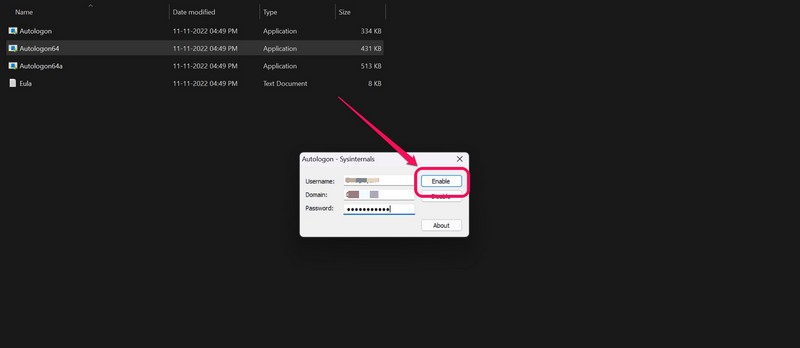So, if you are someone using a Windows 11 device and do not want to put in your password or Windows Hello PIN every time you start/ wake up your computer, let us tell you all about auto-login on Windows 11. Read this article till the end to know how you can use it for a password/ PIN-less sign-in experience on Windows 11.
What is Auto Login on Windows 11?
In this article, we are going to explain all about automatic login on Windows 11 devices and how you can configure your device for the same. However, before we move on to that, let’s take a look at what it actually is and how it could affect your Windows 11 experience. Auto-login on Windows 11 is nothing but a way to sign in a user on their devices without any passwords or PINs. Although there is no official way to enable auto-login on Windows, this article will provide you with a workaround to enable the feature. The auto-login function can be a great way to reduce the boot time of Windows 11 devices as users will not require to put in their PIN or password to turn on their system every time or wake it up from Sleep Mode. However, on the downside, as there is no PIN or password in this configuration, the Windows 11 device would be vulnerable to physical security threats from other users. Hence, the auto-login configuration on Windows 11 would be best for those users who have personal machines that they know no one will use except for them. Nonetheless, if you are someone who uses personal laptops in an office, I’d not recommend you use the auto-login function on Windows 11. There are many Windows 11 laptops that offer OEM features to bypass the Windows lock-screen and reduce boot time. For example, ASUS offers a feature called “One-Touch Login” that leverages the fingerprint-sensor-on-power-button design of certain Windows 11 laptops to cache the fingerprint when a user touches the power button to turn on their laptops. This bypasses the Windows lock-screen and eliminates the need for PINs or passwords for signing into Windows. More or less every ASUS laptop equipped with a fingerprint sensor has this feature. So, do your research, and if you see your laptop has this feature, I’d recommend you skip enabling the auto-login function on Windows 11. Now, with this information out of the way, let’s learn how to configure a Windows 11 device for auto-login.
Enable Auto-Login on Windows 11
Now, there are several ways that you enable auto login on Windows 11 on your device to bypass the Windows lock screen. You can find the steps for each of the methods under their respective headings right below.
1. From Windows Settings
Starting with the easiest one, this method involves disabling every other way to sign in to Windows 11 on a device. Although this method is pretty much easier than the others, keep in mind that your Windows 11 device would be completely unprotected. Moreover, if you use a Microsoft account to sign in to your Windows 11 device, you might need to provide your Microsoft account password when you start the device. After that, however, they will not be required to put in their password every time their laptop or PC goes to Sleep Mode. For users with local accounts, on the other hand, the auto-login feature would eliminate the need for PINs or passwords system-wide. They will not be required to provide a password even when they turn on their Windows 11 device. Before you enable auto-login on Windows 11, you will need to disable every sign-in option from your Account settings. For this:
- Go to the Windows Settings menu from Start or press the Win+I button-combo to open the Settings page.
- On the side-navigation bar, click on the “Accounts” tab.
- Go to the “Sign-in options” settings. Here you will find the different ways to sign in to your device.
- From here, you will need to disable every Windows Hello sign-in option, including Facial recognition, Fingerprint recognition, and PIN, if you have set any of them on your Windows 11 device previously.
- However, it is worth mentioning that although you will be able to easily disable the facial and fingerprint recognition options, the “Remove” button for the PIN option will appear greyed out.
- To activate this button and remove the Windows Hello PIN, you are required to first disable the “For improved security, only allow Windows Hello sign-in for Microsoft accounts on this device” option.
- Following this, close the entire Settings window and re-open it from the Start menu or by pressing Win+I. Go to Accounts -> Sign-in options, and you will now find the “Remove” button for the Windows Hello PIN option activated.
- Click on it and confirm your action to disable the Windows Hello PIN option. And with that, you have disabled every Windows Hello sign-in option.
- Now, after disabling the Windows Hello sign-in options, mark the “If you’ve been away, when should Windows require you to sign in again?” option as “Never.” Also, if you have “Dynamic lock” enabled on your device, disable that too.
- After this, Press Win+R to open the Run tool and type “netplwiz” in the text field.
- Press Enter. This will open up the User Accounts window.
- Here, uncheck the “users must enter a username and password to use this computer” option.
- Click the “Apply” button below. You may need to enter your user account password to apply the changes.
- Now, after all these, your Windows 11 device should be able to automatically log in to Windows without you needing any kind of PIN or a password. Do keep in mind that if you use a Microsoft account to sign in to your Windows 11 device, you might need to provide your Microsoft account password when you start the device. After that, however, they will not be required to put in their password every time their laptop or PC goes to Sleep Mode. For users with local accounts, on the other hand, the auto-login feature would eliminate the need for PINs or passwords system-wide. They will not be required to provide a password even when they turn on their Windows 11 device.
2. From Windows Registry
The second method to enable auto-login on Windows 11 is a tricky one. This method involves using the Windows registry to create an auto-login function for a Windows device. Now, it is of utmost importance to mention that when working on Windows Registry, unintended changes might permanently alter system settings and in turn, affect your Windows experience. So, be sure to follow the below steps exactly as they are to avoid such situations. With that out of the way, take a look at the steps right below.
- Open the Run Tool by pressing Win+R and type “regedit” in the text field.
- Now, go to the “HKEY_LOCAL_MACHINE\SOFTWARE\Microsoft\Windows NT\CurrentVersion\Winlogon” path in the Registry Editor. Copy the path from here without the quotes and paste it on the above bar in your Windows Registry window.
- Here, click on the Edit option at the top menu bar to open the context menu.
- Go to “New” and select the “DWORD (32-bit) Value” option from the drop-down menu.
- Name it “AutoAdminLogon.”
- Double-click the newly-created key to open it and set the Value data to 1.
- Open the Edit menu again and go to the New option.
- This time, however, select the “String Value” option and name it “DefaultUserName.”
- After creating the key, double-click to open it and change the Value data with your username.
- Again click the Edit button at the top, go to New, and select “String Value.”
- Name this key “DefaultPassword.”
- Open it by double-clicking, and provide your password in the Data Value section. Following these steps, the auto-login feature should be enabled on your Windows 11 device. This means that you will be able to sign into your computer without the hassle of passwords or PINs. In the future, if you want to disable the auto-login function on Windows 11 to secure your device, you can simply open your Registry Editor and delete the AutoAdminLogon, DefaultUserName, and DefaultPassword keys by right-clicking on each of them individually. This will enable passwords and Windows Hello sign-in options on your Windows system again.
3. Using a Dedicated App
Now, the third method to enable auto-login on Windows 11 is to use a dedicated software called AutoLogon. So, go to this link to download the Autologon setup file. You will get a .zip folder. So, right-click on the ZIP folder and click on the “Extract All” option to extract all the files to a known location in your system and follow the steps below:
- Open the folder in which you extracted the Autologon files.
- Double-click the file that matches the configuration of your Windows 11 device to open it.
- Click the “Yes” button for the Windows prompt “Do you want this app to make changes to you device?”
- Now, click on the “Agree” button on the following dialog box.
- Then, a dialog box with your device name and username will pop up.
- Fill in the Password field with your account password and click the “Enable” button.
- Once you enable it, you will get a confirmation dialog box, stating that the Autologon tool has been configured. Now, whenever you start your Windows 11 device or wake it up from Sleep Mode, the Autologon tool will bypass the Windows lock screen and automatically take you to your home screen. If you want to disable the Autologon tool, simply open the setup file that you used to enable it, and on the credential-entry dialog box, hit the “Disable” button after putting in your password (screenshot below).
How to make Windows 11 go straight to the Windows Home Screen?
To make your Windows 11 device bypass the lock screen, eliminating the need for passwords or PINs, use any of the methods provided in this article.
Why does Windows keep asking for my PIN on Windows 11?
The Windows Hello PIN is a security tool that is used to sign into Windows. So, if you have a Windows Hello PIN setup, your Windows 11 device will ask you to provide it whenever you start your computer or wake it up from Sleep mode.
Why is my Windows 11 computer stuck on the lock screen?
When you start your Windows 11 device, it will go straight to your lock screen. You will then have to press any key on your keyboard or click a mouse button to bring up the login screen.
Final Words
So, this was everything about enabling auto-login on Windows 11. Although it is a nifty way to bypass the Windows lock screen and reduce the boot time of Windows 11 devices by a few seconds, there are a few risks involved. Hence, we’d recommend you use a password or a simple PIN for your Windows device, just for precaution. With that, I come to the end of this article. Let me know in the comments if it helped you enable auto-login on your Windows 11 device. I will meet you at the next one.


